Growing Beetroot in Containers might seem like a challenge, especially if you’re short on garden space, but trust me, it’s totally achievable and incredibly rewarding! Imagine plucking vibrant, earthy beetroot straight from your patio – fresh, delicious, and bursting with homegrown goodness. For centuries, beetroot has been cultivated for its nutritional value and vibrant color, dating back to ancient Mediterranean civilizations who prized its leaves even more than the root itself.
But why bother with container gardening for beetroot? Well, in today’s world, many of us are living in apartments, condos, or homes with limited outdoor space. We crave that connection to nature and the satisfaction of growing our own food, but traditional gardens just aren’t an option. That’s where the magic of container gardening comes in! Plus, growing beetroot in containers allows you to control the soil quality, protect your plants from pests, and even extend the growing season by moving them indoors during harsh weather.
This DIY guide is packed with simple, effective tricks and hacks that will empower you to successfully cultivate beautiful, bountiful beetroot, no matter how small your space. I’m going to share all my secrets to ensure you have a thriving beetroot harvest, from choosing the right container and soil to watering and fertilizing like a pro. Get ready to unleash your inner gardener and enjoy the delicious rewards of your labor!
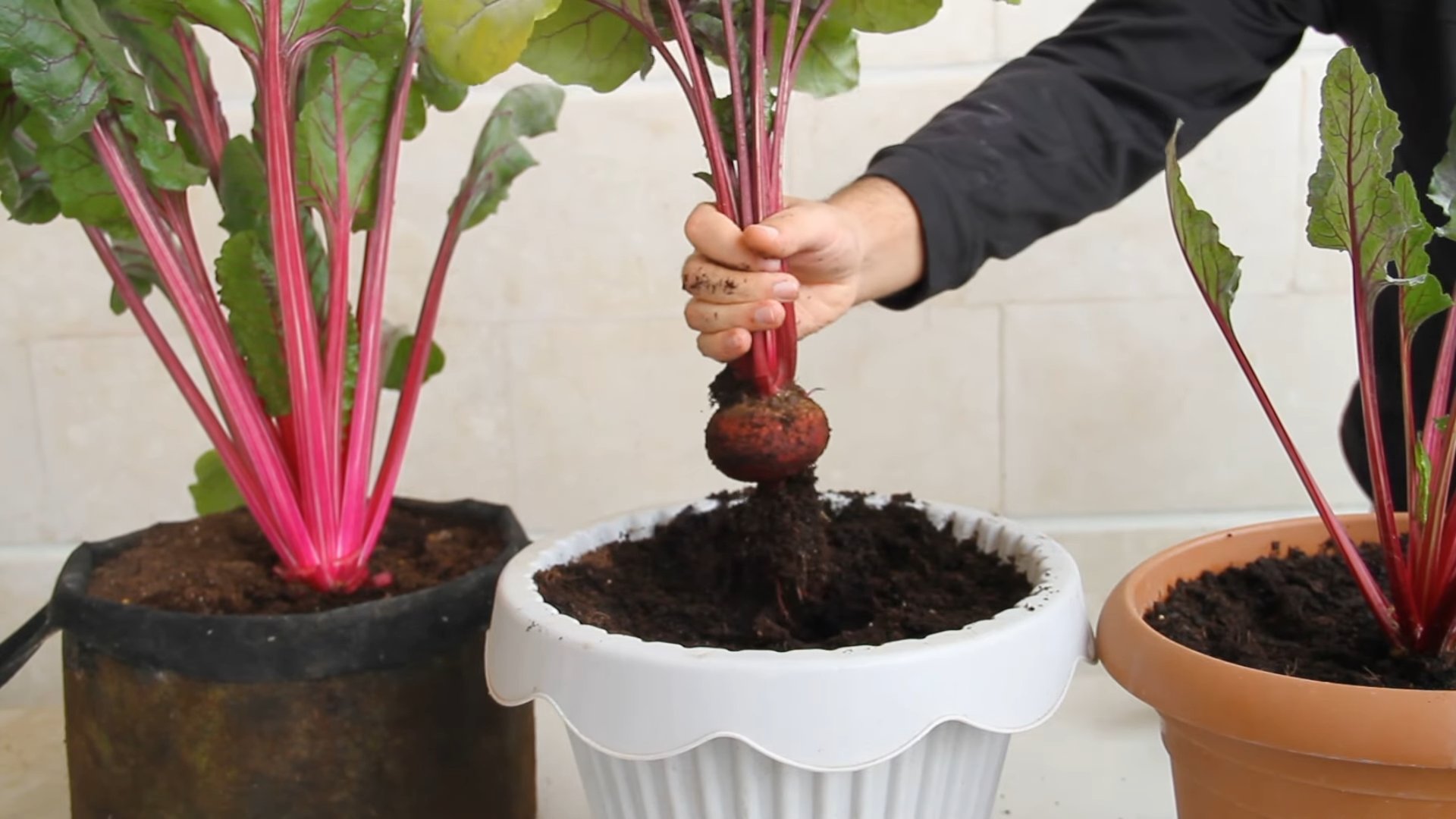
Growing Beetroot in Containers: A Beginner’s Guide
Hey there, fellow gardening enthusiasts! So, you’re thinking about growing beetroot but don’t have a sprawling garden? No problem! Container gardening is the answer, and beetroot thrives in pots. I’m going to walk you through everything you need to know to get a bountiful beetroot harvest, even if you only have a balcony or patio. Let’s get our hands dirty!
Choosing the Right Container and Soil
First things first, let’s talk about the essentials: the container and the soil. These are crucial for healthy beetroot growth.
* Container Size: Beetroot needs space to develop its bulbous root. I recommend a container that’s at least 12 inches deep and 12 inches in diameter. This gives the beetroot enough room to grow without feeling cramped. Remember, bigger is generally better! You can also use a long trough-style planter to grow multiple beetroots together, just make sure to space them adequately.
* Drainage: This is non-negotiable! Your container *must* have drainage holes. Beetroot hates sitting in soggy soil, which can lead to root rot. If your container doesn’t have drainage holes, you can drill some yourself. Just be careful not to crack the container.
* Material: The material of the container is less critical, but some options are better than others. Terracotta pots are classic and allow for good airflow, but they can dry out quickly. Plastic pots are lightweight and retain moisture well, but they can overheat in direct sunlight. Fabric pots are a great option because they allow for excellent drainage and airflow, and they’re also lightweight and easy to move.
* Soil: Beetroot needs well-draining, fertile soil. I always recommend using a good quality potting mix specifically formulated for vegetables. Avoid using garden soil, as it can be too heavy and compacted for container gardening. You can also amend your potting mix with compost or well-rotted manure to add extra nutrients. I like to add a handful of perlite to improve drainage.
Selecting Beetroot Varieties
Now, let’s choose the right beetroot variety for your container garden. There are tons of options, but some are better suited for containers than others.
* Globe Varieties: These are the most common type of beetroot and are generally a good choice for containers. They produce round, bulbous roots. Some popular globe varieties include ‘Detroit Dark Red’, ‘Early Wonder Tall Top’, and ‘Red Ace’.
* Cylindrical Varieties: These varieties produce long, cylindrical roots. They’re a good option if you’re short on space, as they tend to grow more vertically than globe varieties. ‘Cylindra’ is a popular cylindrical variety.
* Novelty Varieties: Don’t be afraid to experiment with different colors and shapes! ‘Golden’ beetroot has a beautiful yellow flesh, while ‘Chioggia’ beetroot has striking red and white rings. These varieties add visual interest to your garden and your plate.
Planting Your Beetroot Seeds
Alright, let’s get to the fun part: planting the seeds!
1. Prepare the Container: Fill your chosen container with your well-draining potting mix, leaving about an inch of space at the top. Gently firm the soil with your hands.
2. Sow the Seeds: Beetroot seeds are actually clusters of seeds, so you’ll often get multiple seedlings from each seed. Sow the seeds about 1 inch deep and 2-3 inches apart. If you’re using a trough-style planter, space the rows about 4-6 inches apart.
3. Water Gently: Water the soil gently after planting, making sure not to dislodge the seeds. I like to use a watering can with a rose head to avoid disturbing the soil.
4. Label Your Container: Don’t forget to label your container with the variety of beetroot you planted and the date. This will help you keep track of your progress.
5. Location, Location, Location: Place your container in a sunny location. Beetroot needs at least 6 hours of sunlight per day to thrive.
Caring for Your Beetroot Plants
Once your beetroot seeds have sprouted, it’s important to provide them with the right care to ensure a healthy harvest.
* Watering: Beetroot needs consistent moisture, but avoid overwatering. Water deeply when the top inch of soil feels dry to the touch. During hot weather, you may need to water more frequently.
* Thinning: As I mentioned earlier, beetroot seeds are actually clusters of seeds, so you’ll likely get multiple seedlings from each seed. Once the seedlings are a few inches tall, you’ll need to thin them out to give them enough space to grow. Choose the strongest seedling in each cluster and gently remove the others. You can transplant the thinned seedlings to another container if you like.
* Fertilizing: Beetroot is a heavy feeder, so it’s important to fertilize regularly. I recommend using a balanced liquid fertilizer every 2-3 weeks. Follow the instructions on the fertilizer label. You can also side-dress your plants with compost or well-rotted manure.
* Weeding: Keep your container free of weeds. Weeds compete with your beetroot plants for nutrients and water. Gently pull out any weeds that appear.
* Pest and Disease Control: Beetroot is generally pest and disease resistant, but there are a few things to watch out for. Aphids can sometimes be a problem. You can control aphids by spraying them with a strong stream of water or by using insecticidal soap. Leaf miners can also attack beetroot leaves. You can control leaf miners by removing and destroying infested leaves. Root rot can be a problem if the soil is too wet. Make sure your container has good drainage and avoid overwatering.
Harvesting Your Beetroot
The moment we’ve all been waiting for: harvesting!
* When to Harvest: Beetroot is typically ready to harvest 7-8 weeks after planting. You can harvest beetroot at any size, but they’re generally best when they’re about 2-3 inches in diameter.
* How to Harvest: Gently loosen the soil around the beetroot with a trowel. Grasp the leaves near the base of the plant and gently pull the beetroot out of the soil.
* Storing Your Beetroot: After harvesting, remove the leaves, leaving about an inch of stem attached. Store the beetroot in a cool, dark place. They should keep for several weeks. You can also store the leaves in the refrigerator for a few days.
Using Beetroot Leaves
Don’t throw away those beetroot leaves! They’re delicious and nutritious.
* Cooking: Beetroot leaves can be cooked like spinach or chard. They can be steamed, sautéed, or added to soups and stews.
* Salads: Young, tender beetroot leaves can be eaten raw in salads.
* Nutritional Value: Beetroot leaves are a good source of vitamins A and C, as well as iron and calcium.
Troubleshooting
Even with the best care, you might encounter some problems along the way. Here are a few common issues and how to address them:
* Poor Germination: If your beetroot seeds aren’t germinating, it could be due to several factors. The soil might be too dry, too cold, or too compacted. Make sure to keep the soil consistently moist and warm. You can also try soaking the seeds in water for a few hours before planting to improve germination.
* Slow Growth: If your beetroot plants are growing slowly, it could be due to a lack of nutrients or sunlight. Make sure to fertilize regularly and provide at least 6 hours of sunlight per day.
* Small Roots: If your beetroot roots are small, it could be due to overcrowding or poor soil. Make sure to thin your seedlings properly and use a well-draining, fertile potting mix.
* Bolting: Bolting is when a plant prematurely flowers and goes to seed. This can happen if the plant is stressed by heat, drought, or poor soil. To prevent bolting, keep the soil consistently moist, provide shade during hot weather, and fertilize regularly.
Enjoying Your Homegrown Beetroot
Growing beetroot in containers is a rewarding experience. Not only do you get to enjoy fresh, delicious beetroot, but you also get the satisfaction of knowing that you grew it yourself. So, grab a container, some seeds, and get started! Happy gardening!
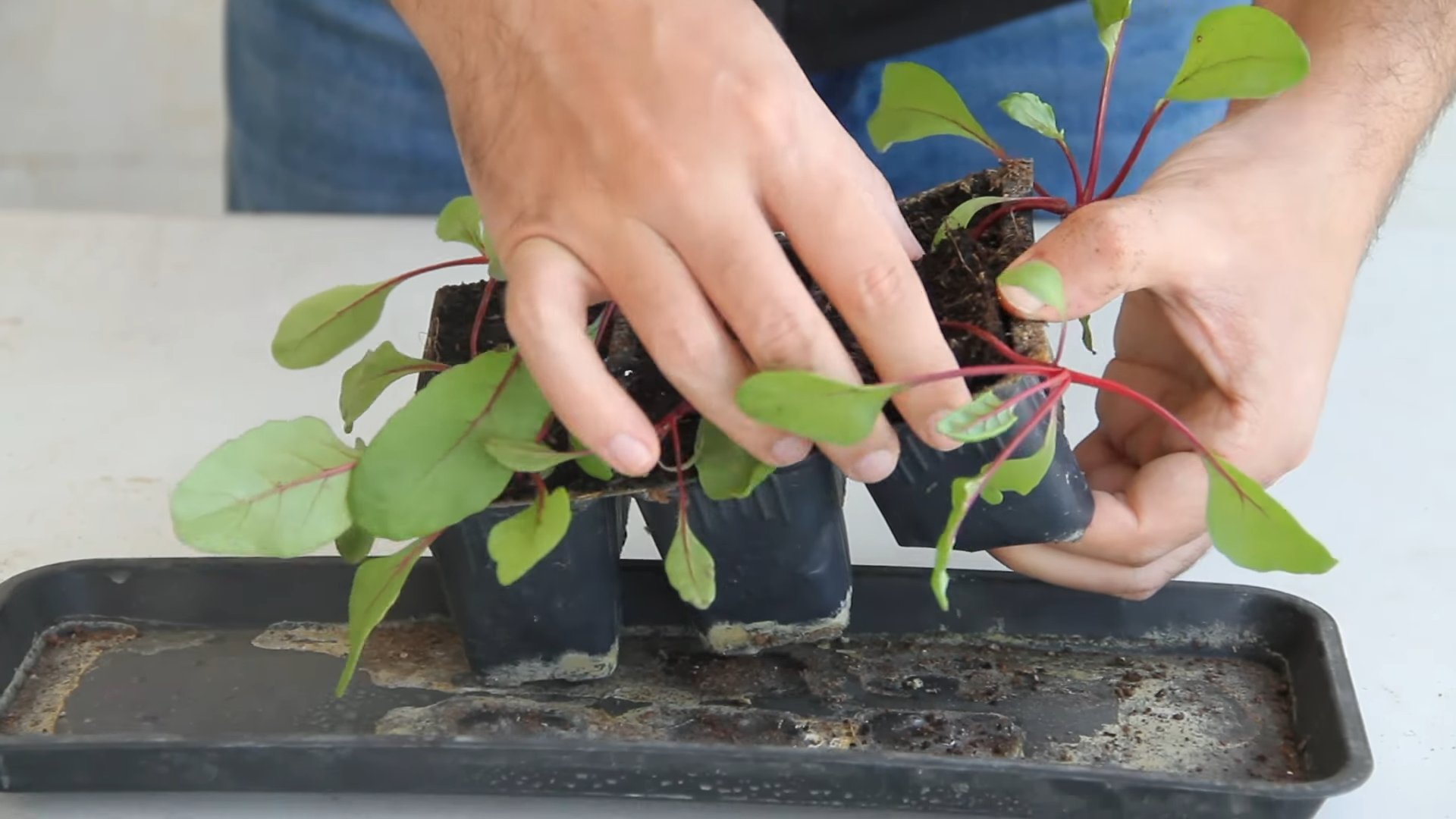
Conclusion
So, there you have it! Growing beetroot in containers is not only achievable, but it’s also a remarkably rewarding experience. We’ve walked through the simple steps, from selecting the right container and soil to nurturing your seedlings and harvesting those vibrant, earthy jewels. But why is this DIY trick a must-try?
Firstly, it democratizes gardening. You don’t need acres of land to enjoy the satisfaction of growing your own food. A sunny balcony, a small patio, or even a well-lit windowsill can become your personal beetroot farm. This accessibility makes fresh, homegrown produce available to everyone, regardless of their living situation.
Secondly, container gardening offers unparalleled control. You dictate the soil quality, the watering schedule, and the pest management strategies. This level of control translates to healthier, more robust plants and, ultimately, a more bountiful harvest. You can tailor the environment to perfectly suit the needs of your beetroot, maximizing its growth potential.
Thirdly, growing beetroot in containers is incredibly space-efficient. Compared to traditional in-ground gardening, containers allow you to pack more plants into a smaller area. This is particularly beneficial for urban dwellers or those with limited outdoor space. You can create a thriving vegetable garden even in the most compact environments.
But the benefits don’t stop there. The visual appeal of beetroot plants, with their lush green foliage and vibrant red roots peeking out from the soil, adds a touch of beauty to any space. It’s a conversation starter, a source of pride, and a constant reminder of the wonders of nature.
Ready to take your beetroot growing to the next level? Consider experimenting with different beetroot varieties. ‘Detroit Dark Red’ is a classic choice, but ‘Golden Beet’ offers a milder flavor and a stunning golden hue. ‘Chioggia’ beetroot boasts beautiful concentric rings of red and white, adding a touch of artistry to your garden.
You can also try companion planting. Marigolds, for example, are known to deter pests, while chamomile can improve the overall health of your beetroot plants. Experiment with different combinations to find what works best for your specific environment.
Another variation to explore is succession planting. By sowing seeds every few weeks, you can ensure a continuous harvest of fresh beetroot throughout the growing season. This is a great way to maximize your yield and enjoy a steady supply of homegrown goodness.
Don’t be afraid to get your hands dirty and experiment. Gardening is a journey of discovery, and there’s always something new to learn. The most important thing is to have fun and enjoy the process.
We wholeheartedly encourage you to try this DIY trick and experience the joy of growing your own beetroot in containers. It’s a simple, rewarding, and sustainable way to connect with nature and enjoy fresh, healthy produce.
Once you’ve harvested your first batch of homegrown beetroot, we’d love to hear about your experience! Share your photos, tips, and stories in the comments below. Let’s create a community of container gardening enthusiasts and inspire others to embrace the joys of growing their own food. Let us know if you have found success with this method of growing beetroot in containers. Happy gardening!
Frequently Asked Questions (FAQ)
What is the best size container for growing beetroot?
The ideal container size for growing beetroot is at least 8-12 inches deep and wide. This allows enough space for the roots to develop properly. Smaller containers can stunt growth and reduce yields. If you’re planning to grow multiple beetroot plants in the same container, choose a larger one to accommodate their root systems. A good rule of thumb is to allow at least 4-6 inches of space between each plant. Remember that drainage is crucial, so ensure your container has adequate drainage holes.
What type of soil is best for growing beetroot in containers?
Beetroot thrives in well-draining, fertile soil that is rich in organic matter. A good potting mix specifically designed for vegetables is an excellent choice. You can also create your own mix by combining equal parts of compost, peat moss (or coconut coir), and perlite or vermiculite. Avoid using garden soil, as it can be too heavy and compact, hindering root development. The pH of the soil should be slightly acidic to neutral, ideally between 6.0 and 7.0.
How often should I water my beetroot plants in containers?
Watering frequency depends on several factors, including the weather, the size of the container, and the type of soil. Generally, you should water your beetroot plants when the top inch of soil feels dry to the touch. Water deeply, ensuring that the entire root zone is moistened. Avoid overwatering, as this can lead to root rot. During hot, dry weather, you may need to water more frequently. Check the soil moisture regularly and adjust your watering schedule accordingly.
How much sunlight do beetroot plants need?
Beetroot plants need at least 6 hours of direct sunlight per day to thrive. Choose a sunny location for your containers, such as a south-facing balcony or patio. If you don’t have access to a sunny spot, you can supplement with artificial grow lights. Insufficient sunlight can result in leggy growth and reduced yields.
What are some common pests and diseases that affect beetroot plants?
Common pests that can affect beetroot plants include aphids, flea beetles, and leaf miners. Aphids can be controlled with insecticidal soap or neem oil. Flea beetles can be deterred with row covers or diatomaceous earth. Leaf miners can be removed by hand or with insecticidal soap. Common diseases include powdery mildew and leaf spot. Powdery mildew can be prevented by ensuring good air circulation and avoiding overhead watering. Leaf spot can be treated with a fungicide. Regularly inspect your plants for signs of pests and diseases and take action promptly to prevent them from spreading.
When should I harvest my beetroot?
Beetroot can be harvested when the roots are about 2-3 inches in diameter. You can also harvest the leaves for use in salads or as a cooked vegetable. To harvest, gently loosen the soil around the beetroot and pull it out of the container. Avoid damaging the roots. The harvesting time depends on the variety of beetroot and the growing conditions. Check the seed packet for specific harvesting instructions.
Can I grow beetroot in containers indoors?
Yes, you can grow beetroot in containers indoors, but you’ll need to provide adequate light. Place your containers near a sunny window or use grow lights to supplement natural light. Ensure that the plants receive at least 6 hours of light per day. Indoor growing conditions can be drier than outdoor conditions, so monitor the soil moisture regularly and water as needed.
How do I prevent my beetroot from becoming woody?
Beetroot can become woody if it’s allowed to grow too large or if it experiences inconsistent watering. To prevent this, harvest your beetroot when it’s still relatively small, around 2-3 inches in diameter. Also, ensure that your plants receive consistent watering, especially during hot, dry weather. Avoid letting the soil dry out completely.
Can I eat the beetroot leaves?
Yes, beetroot leaves are edible and nutritious. They can be used in salads, stir-fries, or as a cooked vegetable. Choose young, tender leaves for the best flavor and texture. Beetroot leaves are a good source of vitamins A and C, as well as iron and fiber.
How do I store harvested beetroot?
To store harvested beetroot, remove the leaves, leaving about an inch of stem attached. Gently brush off any excess soil. Store the beetroot in a cool, dark, and humid place, such as a refrigerator or root cellar. Beetroot can be stored for several weeks under these conditions. You can also pickle or can beetroot for longer-term storage.

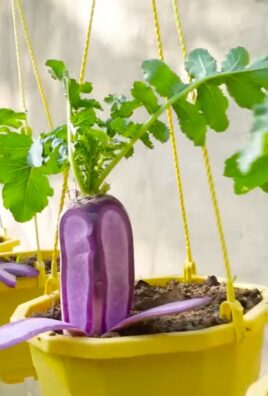
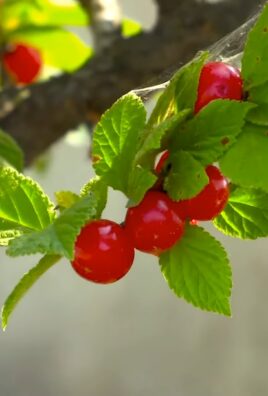
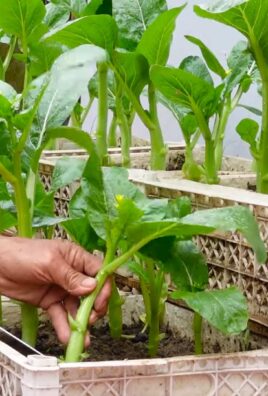
Leave a Comment